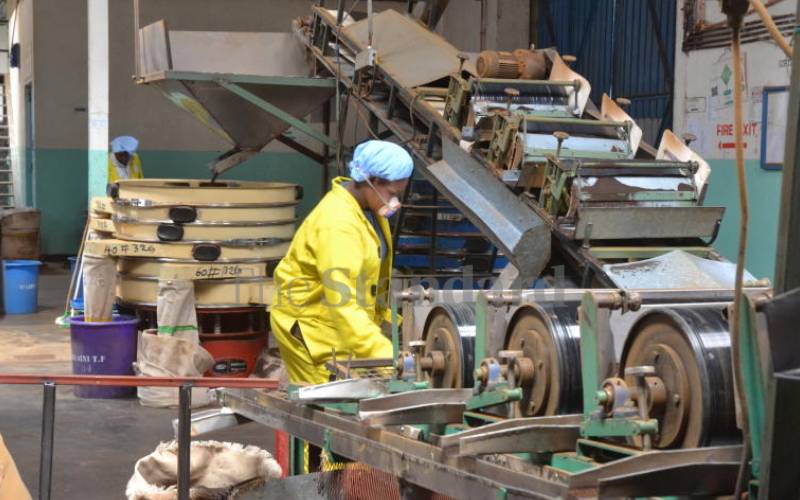Kenya is at a crucial crossroads in its economic journey. The recently released Economic Survey 2025 reveals worrying signs about the manufacturing sector—a vital engine for sustainable growth and prosperity. The sector’s share of GDP has sharply declined from around 12% in 2012-13 to just 7.2% in 2024.
This decline is not just a statistic; it threatens Kenya’s broader goals of structural economic transformation, job creation, especially for the youth, and inclusive growth that benefits all citizens.
The Current State of Manufacturing and Its Challenges
Although there are modest signs of recovery in 2024, including 4.4% output growth and a slight 1.9% increase in employment, these gains are fragile. Kenya urgently needs bold policy reforms to not only sustain this recovery but to reverse a decade-long downward trend in manufacturing performance.
Without decisive action, the potential of manufacturing to drive economic development and social welfare will remain severely limited.
Learning from Global Success: The Vietnam Example
To unlock manufacturing’s full potential, Kenya must develop a comprehensive industrial policy that is integrated and forward-looking, drawing on proven international best practices. Vietnam offers an inspiring example: in 2024, its manufacturing sector contributed about 16.6% to GDP, powered by strategic government policies supporting state-backed financing, affordable energy, and market liberalization.
Vietnam’s success also lies in integrating small and medium enterprises (SMEs) into global supply chains, enhancing competitiveness and industrial dynamism. Kenya can adapt such strategies to fit its unique context.

Priority Reforms for Kenya’s Manufacturing Revival
Tackling High Energy Costs:
One of the biggest obstacles is the high cost of electricity, which exceeds prices in regional competitors like Tanzania and Egypt. Kenya must reform its power sector, including full liberalization and encouraging competition, similar to telecom reforms in the 1990s. This would lower costs, improve supply reliability, and attract investments—especially in energy-intensive industries.
Improving Access to Affordable Capital:
Manufacturers, particularly SMEs, need better access to financing with reasonable interest rates and flexible terms. Government domestic borrowing must be restructured to avoid crowding out private sector credit. Reforming institutions like the Kenya Development Corporation to offer long-term, low-interest loans is essential. State-backed financing has been key in industrial growth in countries like China and Vietnam.
Simplifying Regulatory Frameworks:
Kenya’s manufacturers face a complex patchwork of county levies and trade barriers that stifle competitiveness. Streamlining regulations, eliminating redundancies, and harmonizing county-level processes will help create a unified market. This will allow manufacturers to scale operations and compete globally.
The Way Forward
Kenya’s manufacturing sector holds great promise but requires courage, commitment, and collaboration among the government, private sector, and civil society. To transition from an import-dependent economy to a vibrant manufacturing powerhouse capable of global competition, decisive and impactful reforms must be implemented now.

FAQ’s
Why is Kenya’s manufacturing sector important to the economy?
Manufacturing is crucial for sustainable growth, job creation, and structural economic transformation. It supports inclusive growth and helps reduce import dependency.
What is the current state of Kenya’s manufacturing sector?
The sector’s share of GDP has dropped from around 12% in 2012-13 to 7.2% in 2024, with only fragile signs of recovery, such as 4.4% output growth and a slight rise in employment.
What lessons can Kenya learn from Vietnam’s manufacturing success?
Vietnam’s industrial growth is driven by state-backed financing, affordable energy, market liberalization, and integrating SMEs into global supply chains—all strategies Kenya can adopt.
What are the main challenges facing Kenya’s manufacturing sector?
High energy costs, limited access to affordable capital, and complex, fragmented regulatory frameworks hamper competitiveness and growth.
What reforms are needed to revive Kenya’s manufacturing sector?
Key reforms include liberalizing the power sector to reduce energy costs, improving SME access to low-interest financing, and simplifying regulatory processes across counties to create a unified market.
Conclusion:
Kenya’s manufacturing sector holds significant potential to drive economic growth and create jobs. However, realizing this potential requires bold reforms targeting energy costs, access to finance, and regulatory simplification. Drawing inspiration from successful models like Vietnam, Kenya must act decisively and collaboratively to transform its manufacturing landscape into a competitive and dynamic industry. The time to implement impactful changes is now for a prosperous future.






